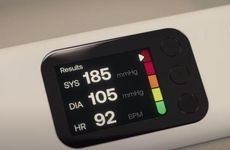The UbiqVue™ 2A Multiparameter System by LifeSignals — which just received its FDA approval — introduces a significant advancement in patient monitoring technology. This system leverages a chest-worn, single-use biosensor to provide continuous tracking of key physiological data, such as oxygen saturation (SpO2), heart rate, respiration, body temperature, and more. The biosensor wirelessly transmits encrypted data to a cloud-based platform, where healthcare providers can monitor patients in near real-time through a web interface.
The patient monitoring technology's appeal lies in its ability to replace periodic manual checks with seamless, ongoing monitoring. This has the potential to improve accuracy and response times in patient care. The UbiqVue™ 2A Multiparameter System integrates easily into existing workflows and is suitable for both hospital and remote settings, making it a scalable solution for individual care and larger population health management.
Innovative Patient Monitoring Technology
Lifesignals Launches the UbiqVue™ 2A Multiparameter
Trend Themes
1. Real-time Patient Monitoring - The adoption of real-time monitoring systems like UbiqVue™ 2A offers enhanced precision and speed in tracking patient health metrics continuously.
2. Cloud-based Health Platforms - The shift to cloud-based platforms for patient data enhances accessibility and aids healthcare providers in delivering timely interventions.
3. Wearable Biosensors - The integration of single-use, chest-worn biosensors represents a leap in non-invasive and consistent health tracking technologies.
Industry Implications
1. Healthcare - The healthcare sector stands to gain from innovations in continuous patient monitoring, improving patient outcomes and operational efficiency.
2. Medical Devices - Medical device manufacturers are exploring advanced biosensors and cloud integration, marking a transformative period for personal health devices.
3. Telehealth - Telehealth services can expand their capabilities with new monitoring technologies, allowing for comprehensive remote patient care.



